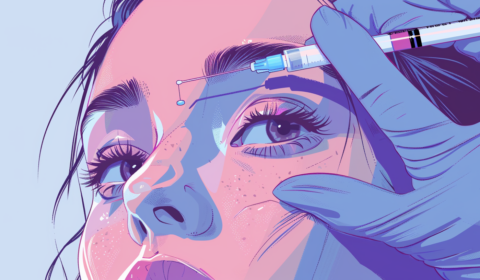A plant-based alternative to a material with an immense carbon footprint, vegan leather is the next step in the sustainable fashion movement.
2020’s recurring trend? Sustainability. Major brands around the world are making significant changes to be more environmentally conscious. Consumers are choosing to shop second-hand. And fast fashion? We all know that’s old news. So, what about leather?
A material renowned for its immense carbon footprint, but one that’s present in a huge number of items we own, leather is rarely considered part of the sustainability conversation. A great deal of the bags, shoes, and accessories we’ve seen during this year’s fashion weeks have been made from leather and, despite its very negative impact on our planet, according to Vogue it’s pretty unlikely that people will stop using it in the near future.
‘We don’t notice how much leather is used in fashion because it’s the norm,’ says Emily Farra, writing for the magazine. ‘For all the chatter we’re bound to hear about organic cotton, non-toxic dyes, renewable energy, upcycling, vintage, and ‘designing clothes that last,’ it’s doubtful that leather’s just going to disappear.’
The solution is finding a replacement that isn’t worse for the environment than the original material itself. Take Stella McCartney, for example. The only luxury designer to have never used animal skins in any one of her collections, she’s received a lot of criticism in the past from those arguing that faux fur and leather materials are actually more toxic because they’re derived from non-biodegradable plastics. While this is true, what people tend to get wrong is thinking that real fur and leather are ‘natural’ materials that’ll eventually decompose.
‘An animal decomposes when it’s natural, but after all of the chemical treatments [applied] to a leather handbag, it isn’t going to decompose in your wardrobe,’ says McCartney. ‘That product is staying alive because of the chemicals that have been put on it. The animals leather kills, the toxins, the chemicals, the cutting down of rainforests, the food and water and electricity it takes to make a leather bag? Considerably more than a synthetic bag.’


Without an obvious middle ground between animal skins and plastic therefore, you’re probably wondering what a conscious shopper is to do. Well, although options are currently rather limited (unless you’re an avid collector of McCartney’s clothes), there is one thing that doesn’t involve completely reinventing synthetics or overhauling the leather industry in its entirety: vegan leather.
Beginning to experiment with living materials back in the 90s, creator Philip Ross eventually came up with a particular way of manipulating mycelium cells so that they can grow, weave together, and form specific shapes. Teaming up with MycoWorks and scientist Matt Scullin, Ross decided to transform his invention into something that the fashion industry could use instead of leather, and that’s how vegan leather came to be.





















